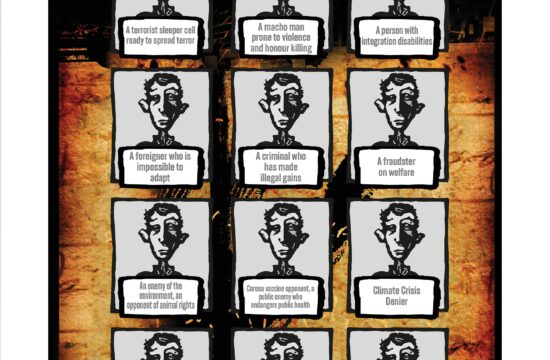Prof. Filipe Melo
BRAZIL
The situation that the Palestinians and Israelis have reached in 2023 is the result of an accumulation of non-compliance with resolutions passed by the United Nations (UN) and the failure to apply International Law.
In general, press coverage of what is happening in the Middle East is very flawed, as it does not provide a historical contextualization of the main events that are fundamental to understanding such a complex subject.
Palestine was divided in 1947 by the UN as follows: 55% of the territory should constitute the State of Israel, 45% should form the Palestinian State and the city of Jerusalem should be under UN administration. In 1948, when Israeli troops arrived to occupy the territory designated by the UN, they found resistance from neighboring Arab countries which, at that time, did not accept the partition of Palestine. Israel emerged victorious and occupied not only the territory designated by the UN, but advanced on palestinian territory. Result: Israel occupied 78% of Palestine and the Palestinians occupied 22%.
For Palestinians, this event is known as Nakba (The Catastrophe), as more than 500 Palestinian cities and towns were destroyed and around 750,000 Palestinians were expelled
or fled israeli forces to escape death. These are the people who make up the Palestinian refugees and who, to this day, wait for International Law to be applied. UN Resolution 194 of 1948 establishes that refugees from the 1948 war have the right to return to their places of origin. On the other hand, Israel refuses to comply with this resolution.
The borders between Israel and the Palestinian territories remained unchanged between 1948 and 1967, when, in a surprise attack, Israel occupied the rest of the Palestinian territories (I mean, East Jerusalem, the West Bank and the Gaza Strip), the Golan Heights (Syria) and the Sinai (Egypt). It was the Six Day War. Israel began to occupy the entire Palestine. From that year onwards, Israel established a policy of colonization of the occupied territories, with the construction of settlements that continue to grow to this day. Every year, Palestinians see how their territory is taken away by the occupying army. Israel has built a network of roads in the Palestinian territories that connect the settlements to Israel. Several of these roads are for the exclusive use of Israeli citizens. The entire Palestinian territory is controlled by Israel, which controls the borders of the West Bank and the Gaza Strip. Egypt signed a peace agreement with Israel in 1978 and recovered the Sinai Peninsula. Syria remains without access to its Golan Heights territory.
In 1967, the UN Security Council passed Resolution 242. This resolution resolution establishes that Israel must return to its pre-Six Day War borders. Israel never obeyed this resolution. In 1979, the UN Security Council approved Resolution 446, on the settlements built by Israel in the Palestinian territories, including East Jerusalem. According to this resolution, the settlements are illegal and constitute a serious obstacle to fair peace in the region. Once again, International Law was violated and not fulfilled.
According to the israeli Governmental Organization Peace Now, in 1993, when Israel and the Palestinian Authority signed the Oslo Accords, there were 110.000 settlers in the Westbank Bank and 140.000 in East Jarusalem. In the argument, the main obligation of Israel was to stop occupying Palestinian lands. Israel never fulfilled the agreement. In 2023, there are 465.000 settlers in the West Bank and 230,000 settlers in East Jerusalem. The application of International Law is the key to pacification in the Middle East.











